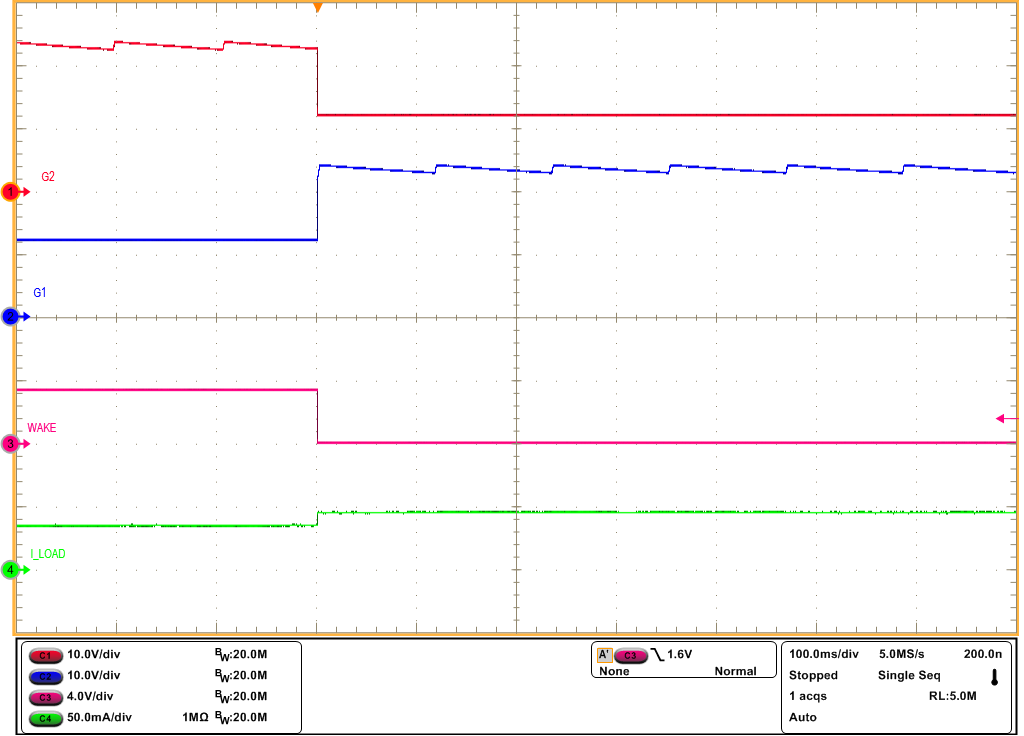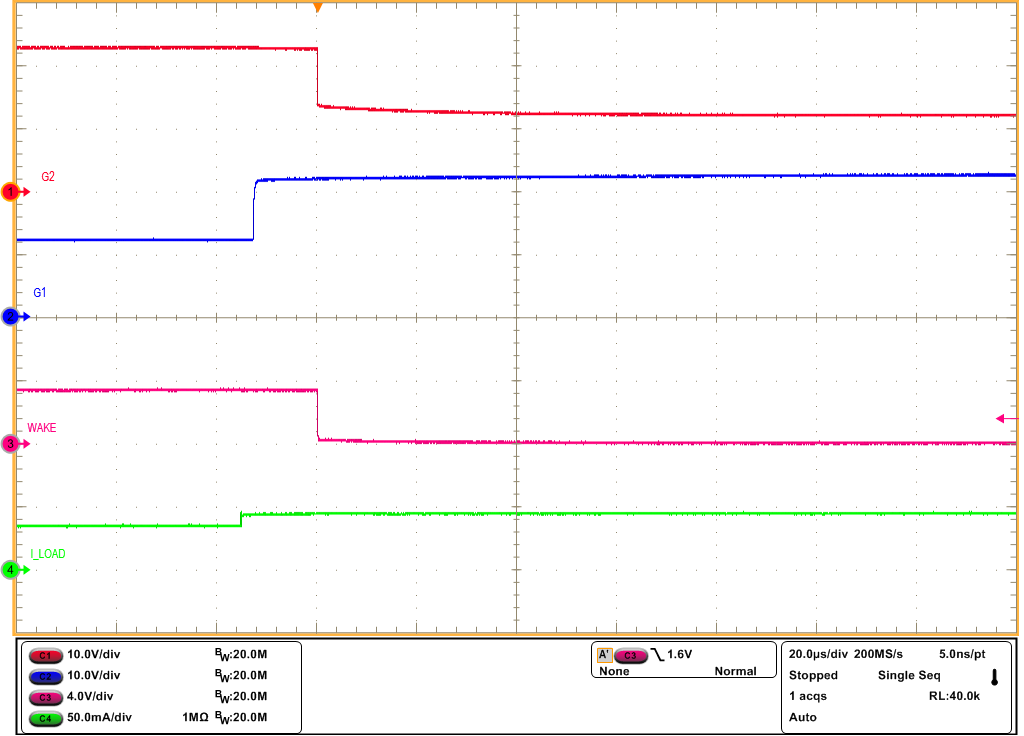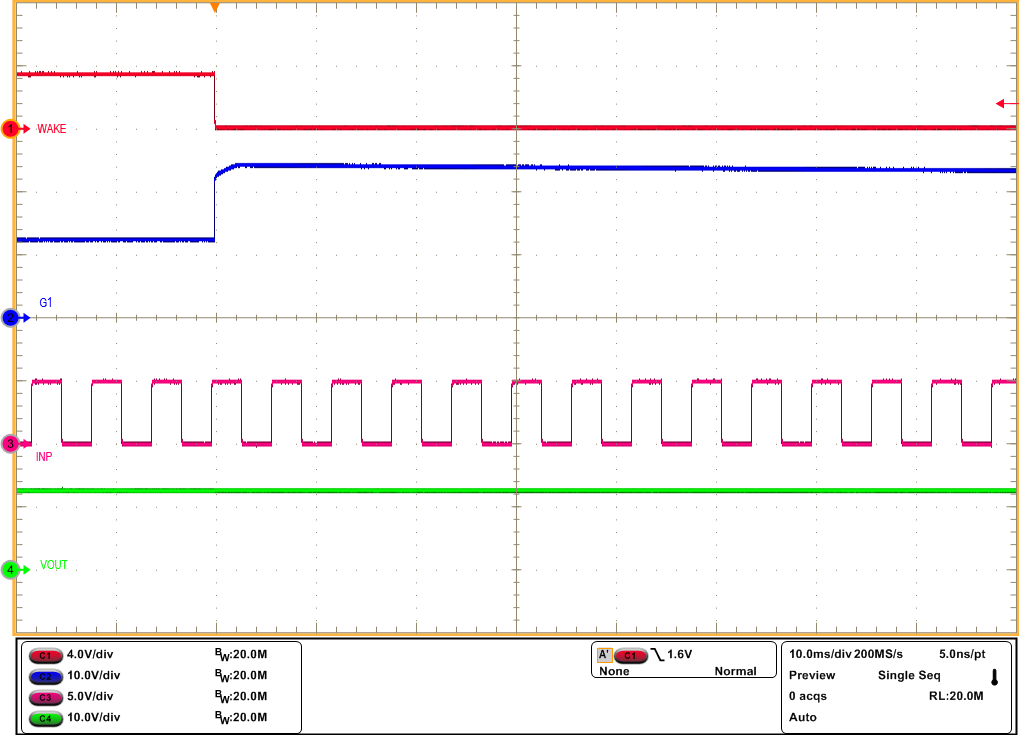SLUUCV7 December 2023 TPS1213-Q1
3.1.2 State Transition (LPM to Active Mode through Load Wakeup Trigger)
Use the following instructions to verify state transition of TPS12130-Q1 through load wakeup trigger
- Apply 12 V at the input of the EVM at no-load.
- Enable the EN/UVLO to HIGH.
- Now, gradually increase the load current from 5 mA to 200 mA and observe the transition from low power mode to Active mode at the pins of G1 (TP5), G2 (TP1), WAKE (TP13) and load current using oscilloscope.
 Figure 3-3 State Transition from LPM to Active Mode (LPMb
= Low, VIN= 12 V, EN/UVLO = High)
Figure 3-3 State Transition from LPM to Active Mode (LPMb
= Low, VIN= 12 V, EN/UVLO = High) Figure 3-4 Zoom-in View of State Transition from LPM to
Active Mode (LPMb = Low, VIN= 12 V, EN/UVLO = High)
Figure 3-4 Zoom-in View of State Transition from LPM to
Active Mode (LPMb = Low, VIN= 12 V, EN/UVLO = High) Figure 3-5 As LPMb = Low, INP Has No
Control on G1 Even After WAKEUP
Figure 3-5 As LPMb = Low, INP Has No
Control on G1 Even After WAKEUP